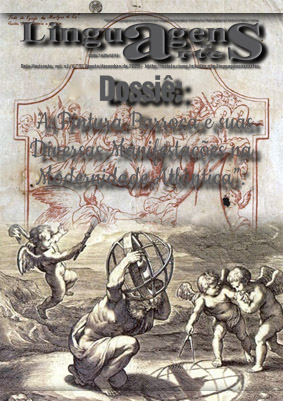LYGIA CLARK, HÉLIO OITICICA E MÁRIO PEDROSA: EMBREANTES DA ARTE CONTEMPORÂNEA BRASILEIRA
Parole chiave:
Lygia Clark, Hélio Oiticica, Mário Pedrosa, Embreantes, Anne Cauquelin, Arte Contemporânea.Abstract
Resumo: O presente artigo parte do conceito de “embreantes”,desenvolvido pela filósofa Anne Cauquelin1,para postular os pares,no contexto da arte brasileira,que corresponderiam ao papel desempenho por Marcel Duchamp, Andy Warhol e Leo Castellinas artes ocidentais. Como objeto de estudo, serão analisadas as obras dos artistas brasileiros Lygia Clark e Hélio Oiticica, além do crítico de arte Mário Pedrosa, como protagonistas no período de transição da arte moderna para o pós-moderno. As proposições e formulações teóricas desenvolvidas pelos “embreantes brasileiros” foram decisivas para a consolidação de uma nova forma de se fazer e pensar a arte no país.
Palavras-chave: Lygia Clark; Hélio Oiticica; Mário Pedrosa;Embreantes; Anne Cauquelin; Arte Contemporânea.
Abstract: This article starts from the concept of “incoming”, introduced by philosopher Anne Cauquelin, to postulate the pairs, in the context of Brazilian art, that would correspond to the role played by Marcel Duchamp, Andy Warhol and Leo Castelli in the western arts. As an object of study, the works of Brazilian artists Lygia Clark and Hélio Oiticica, as well as the art critic Mário Pedrosa, will be analyzed as protagonists in the period of transition from modern to postmodern art. The propositions and theoretical formulations developed by the “Brazilian incoming” were decisive for the consolidation of a new way of making and thinking art in the country.
Keywords: Lygia Clark; Hélio Oiticica; Mário Pedrosa; Incoming; Anne Cauquelin; Contemporary Art.
Recebido em: 27/12/2019 – Aceito em 04/08/2020
Downloads
Pubblicato
Come citare
Fascicolo
Sezione
Licenza
Copyright (c) 2020 Bruno Henrique Fernandes Gontijo

Questo lavoro è fornito con la licenza Creative Commons Attribuzione - Non commerciale 4.0 Internazionale.
Autores que publicam nesta revista concordam com os seguintes termos: Autores mantém os direitos autorais e concedem à revista o direito de primeira publicação, com o trabalho simultaneamente licenciado sob a Licença Creative Commons Attribution-Non-Commercial 4.0 Internacional (CC - BY - NC 4.0) que permite o compartilhamento do trabalho com reconhecimento da autoria e publicação inicial nesta revista. Autores têm autorização para assumir contratos adicionais separadamente, para distribuição não-exclusiva da versão do trabalho publicada nesta revista (ex.: publicar em repositório institucional ou como capítulo de livro), com reconhecimento de autoria e publicação inicial nesta revista. Autores têm permissão e são estimulados a publicar e distribuir seu trabalho online (ex.: em repositórios institucionais ou na sua página pessoal) a qualquer ponto antes ou durante o processo editorial, já que isso pode gerar alterações produtivas, bem como aumentar o impacto e a citação do trabalho publicado (Veja O Efeito do Acesso Livre).

















